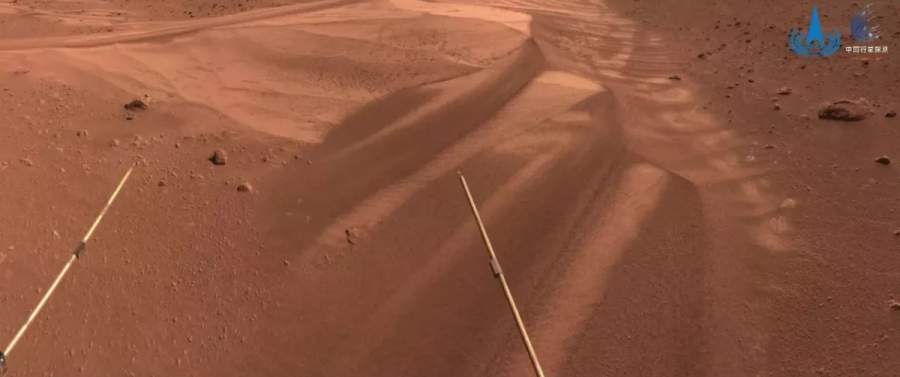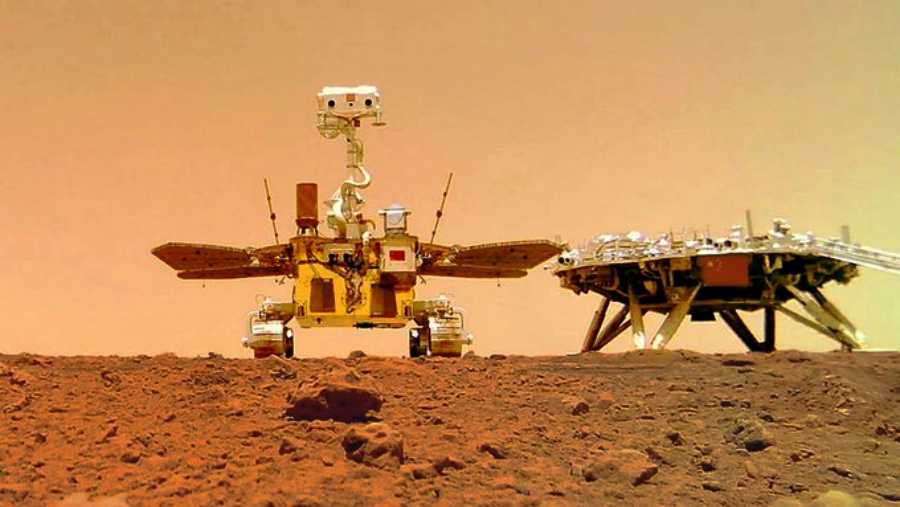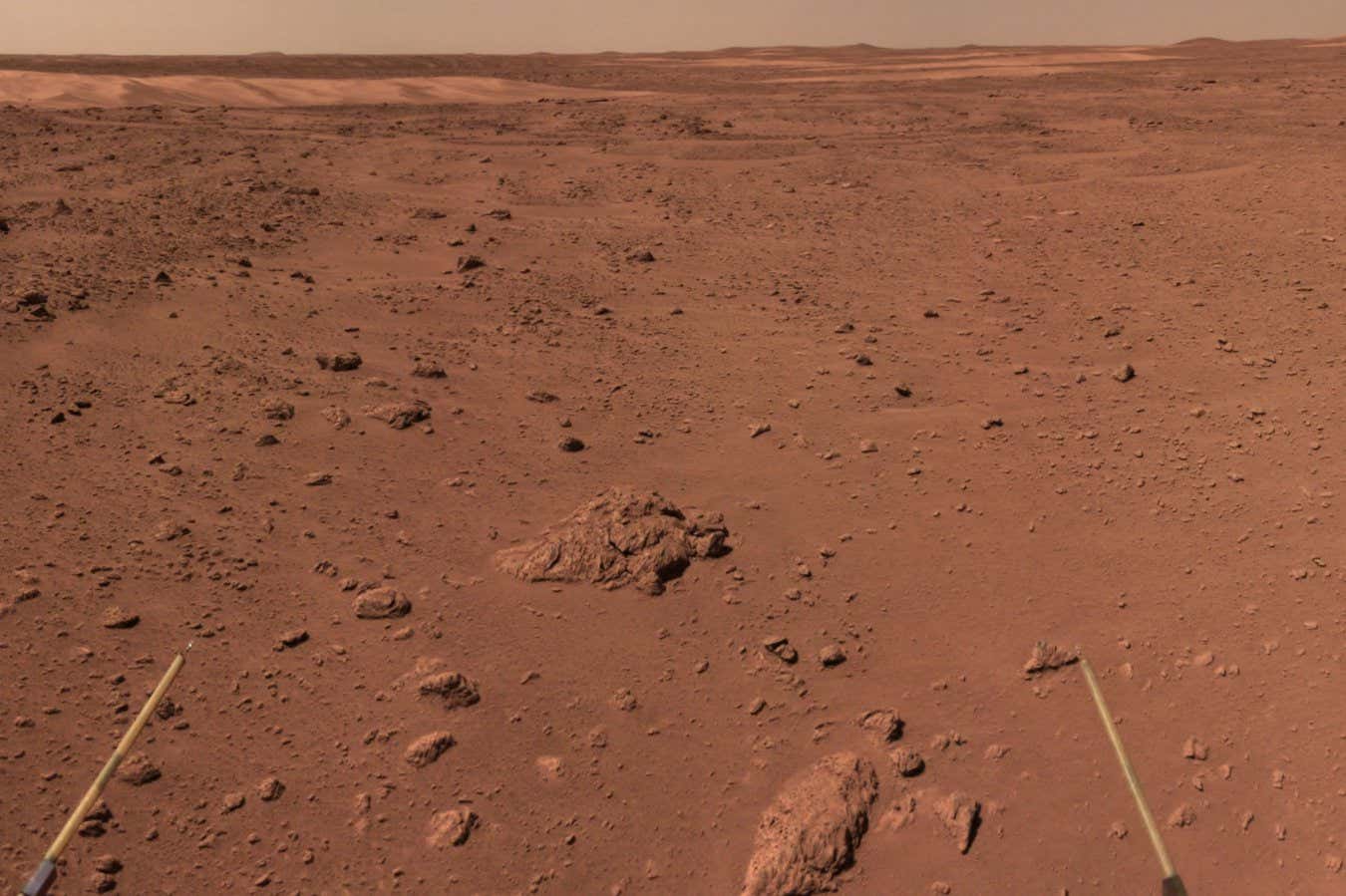![]() A file photo of the Chinese Mars rover Zhurong near its landing platform, in an image taken by a remote camera, June 11, 2021 Photograph:(Agencies)
A file photo of the Chinese Mars rover Zhurong near its landing platform, in an image taken by a remote camera, June 11, 2021 Photograph:(Agencies)
Sun 30 Apr 2023:
For the first time, China’s Zhurong rover discovered indications of recent water activity on Mars, indicating that the Red Planet has a few locations where conditions are adequate for life to exist.
According to Chinese scientists, the rover, which landed on Mars in 2021, discovered liquid water on sand dunes in low latitudes, i.e., closer to the equator and away from the planet’s poles.
Scientists have long assumed that Mars originally had an earth-like temperature and an ocean running across its surface three billion years ago, which would have been quite different from the current arid and barren environment.
What has perplexed them, however, is where all this water went, with scientists believing most of it likely became trapped in the planet’s outer layer, or crust.
Till now, no evidence had been provided to show the presence of liquid water at low latitudes on Mars.
But Friday’s discovery is a major breakthrough for understanding the evolutionary history of Mars as it provides future possible clues for extra-terrestrial life.

The scientists, however, pointed out that the rover did not directly detect any water in the form of frost or ice, rather it observed salt-rich dunes with cracks and crusts.
They said that since temperatures on Mars oscillate wildly and spike in the mornings between 5 am and 6 am, the saltwater evaporated and left behind salt and other newly formed minerals that later seeped between the dune’s sand grains, cementing them to form a crust.
“This is important for understanding the evolutionary history of the Martian climate, looking for a habitable environment, and providing key clues for the future search for life,” said Professor QIN Xiaoguang, of the Chinese Academy of Sciences (CAS), who led the research.

A Martian sand dune imaged by China’s Zhurong rover before it entered hibernation in May 2022. (Image credit: CNSA/PEC)
He and his team used data obtained by the Zhurong rover’s Navigation and Terrain Camera (NaTeCam), Multispectral Camera (MSCam), and its Mars Surface Composition Detector (MarSCoDe).
Their study revealed that the surface layer of the dune was rich in hydrated sulfates, hydrated silica, iron oxide minerals and possibly chlorides.
“According to the measured meteorological data by Zhurong and other Mars rovers, we inferred that these dune surface characteristics were related to the involvement of liquid saline water formed by the subsequent melting of frost/snow falling on the salt-containing dune surfaces when cooling occurs,’ said Professor QIN.
SOURCE: INDEPENDENT PRESS AND NEWS AGENCIES
______________________________________________________________
FOLLOW INDEPENDENT PRESS:
TWITTER (CLICK HERE)
https://twitter.com/IpIndependent
FACEBOOK (CLICK HERE)
https://web.facebook.com/ipindependent
Think your friends would be interested? Share this story!






